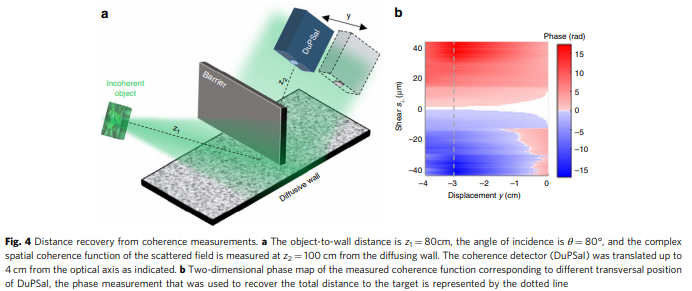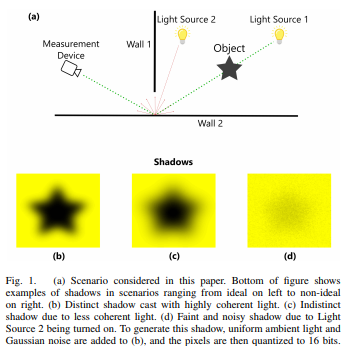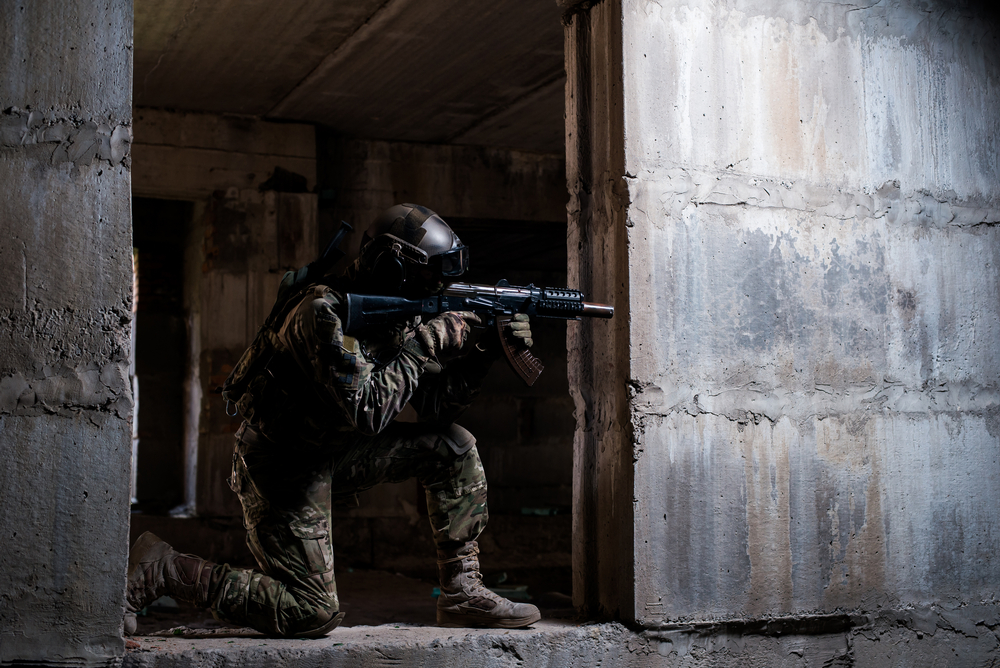With partial funding from DARPA, researchers at the University of Central Florida (UCF) discover how to “see” around corners with a new sensing method.

A research paper published this week in Nature titled “Passive sensing around the corner using spatial coherence” shows that “a highly scattering wall can transfer certain statistical properties of light, which, in turn, can assist in detecting objects even in non-line-of-sight conditions.”
The new sensing method the UCF team developed could lend itself to a number of practical applications, including use in military defense, surveillance, search and rescue and medicine.
Read More: DARPA wants to make AI a ‘collaborative partner’ for national defense
Defense One reports that the technology works like “having multiple radars can help you pinpoint the location of an aircraft, or having two people describe a person leads to a better picture of that person’s appearance.”
This sensing approach is completely passive, assumes no control over the source of light, and relies solely on natural broadband illumination, according to the research.
“The fact that fundamental properties are not completely destroyed when light bounces off a diffuse medium like a wall can be used in so many different ways,” said Aristide Dogariu, a UCF Pegasus Professor of Optics and Photonics, on UCF Today.
“The question is, how much information you can still recover through this broken mirror-like surface,” he added.
The research experimentally demonstrates that the transformation of spatial coherence during the reflection of light from a diffusing wall can be used to retrieve geometric information about objects hidden around a corner and assess their location.

Already, this is of interest to the US military, having received funding from the Defense Advanced Research Projects Agency (DARPA).
“Based on results of our recent simulations, we envision that non-line-of-sight, passive imaging of complex scenes could be achieved by data fusing that combines spatial coherence with additional intensity information,” said George Atia, a professor and member of a larger UCF team funded under DARPA’s Revolutionary Enhancement of Visibility by Exploiting Active Light-fields (REVEAL) project.
Read More: Brain-computer interface allows for telepathic piloting of drones
DARPA’s REVEAL program aims to develop a comprehensive theoretical framework to enable maximum information extraction from complex scenes by using all photon pathways and leveraging light’s multiple degrees of freedom. This framework would guide the development of new imaging hardware and software technologies.
The program will test the bounds of the developed framework and the functionality of the new imaging technologies via a challenge problem that calls for full 3-D scene reconstruction from a single viewpoint.
Similar Non-Line-Of-Sight Passive Imaging Research

The world’s largest technical professional organization for the advancement of technology, IEEE, has several members working on light wave technology for imaging.
The same UCF professor mentioned earlier, Atia, is also an IEEE member, and together with Andre Beckus Student Member, IEEE and Alexandru Tamasan, published a research paper in July titled “Multi-modal Non-line-of-sight Passive Imaging” in the same vein of spatial coherence and the reflection of light from a diffusing wall.
The abstract reads:
“We consider the non-line-of-sight (NLOS) imaging of an object using light reflected off a diffusive wall. The wall scatters incident light such that a lens is no longer useful to form an image. Instead, we exploit the four-dimensional spatial coherence function to reconstruct a two-dimensional projection of the obscured object. The approach is completely passive in the sense that no control over the light illuminating the object is assumed, and is compatible with the partially coherent fields ubiquitous in both indoor and outdoor environments.”
Until now, detection of objects around a corner has only been possible by emitting light toward the object and modifying some of its properties, say by sending a pulse of light, the light will bounce off the diffuse wall, onto the object, to the diffuse wall again, and back to the detector.
The amount of time the light takes to return to the detector is then used to triangulate the position of the object. The problem with such methods is that the emission of light discloses the intent to see, which can be problematic in covert situations.
This new sensing method is not specific to light. It could be applied for example to infrared or microwaves radiation.












